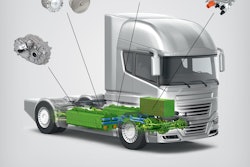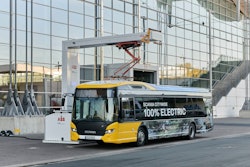Siemens is launching the eMobility calculator, a tool that will estimate the infrastructure requirements and potential impacts of electric transportation in cities over the next 30 years. As more cities look to electrify transportation to cut carbon footprints, reduce congestion and create new economic opportunities, they face the equally important need to support these new systems with robust infrastructure across vehicle charging, power grids, and the roads themselves. This tool will give cities of any size a clear map of what type of infrastructure improvements will be required in order to electrify private cars, public buses, and other fleets, including estimates on the number of electric vehicles chargers needed and on parking and land use.
“The advent of new technologies and business models provides city decision-makers with an opportunity to redefine what is working in their cities and to reinvent what’s not,” says Julia Thayne, Innovation and Technology for Cities, Siemens Cities Center of Competence. “This tool is intended to map a clear pathway of how a city can shape its mobility networks to achieve long-term sustainability, both environmental and economic.”
Although many cities’ sustainability targets are set for the long-term, such as 2035 or 2050, Siemens’ research has shown that cities need to start working to meet these goals today through a proactive approach to planning and investments. The eMobility calculator projects that, in a city like Los Angeles, the number of electric vehicle chargers needed and amount of energy consumed by EVs peaks in 2035, meaning the majority of investments in chargers and grid modernization will need to be made before then. For example, a city like L.A. would need to install up to 100 electric vehicle (EV) chargers per week – starting now and continuing through 2050 – to accommodate an all-electric vehicle landscape. And by adopting more shared eMobility options like electric vehicles and public transport, L.A. could reclaim 720,000 sq. ft. of land, which equates to enough space for over 500,000 new homes.
The launch of the eMobility calculator coincides with a new research report from Siemens on “Powering the Future of Urban Mobility.” The report takes analysis about long-term sustainability planning in cities from bird’s-eye-view to street level, focusing on how people use different modes of transportation to navigate urban areas as one of the toughest, but most critical, topics for cities to address today and into the future.
About Siemens Smart Data Tools for Urban Development
The eMobility calculator joins Siemens’ broader portfolio of urban development data tools designed to help cities plan for and achieve their sustainability goals. Siemens data-driven City Performance Tool, launched in 2015, has been used by a growing list of cities in the U.S. around the world including Washington, DC and Charlotte, NC, to calculate the environmental and economic impacts of building, transport and energy technologies. In addition, Siemens’ new City Air Monitoring cloud-based software evaluates cities’ pollution data in real-time and formulates potential solutions to help them determine concrete recommendations for action.



















